LISA Observatory
Non-EO
ESA
Technology and Research
Quick facts
Overview
| Mission type | Non-EO |
| Agency | ESA |
LISA (Laser Interferometer Space Antenna) Observatory
Project Status References
LISA will be the first spaceborne gravitational wave observatory. Selected to be ESA's third large-class mission, it will address the science theme of the Gravitational Universe. LISA will consist of three spacecraft separated by 2.5 million km in a triangular formation, following Earth in its orbit around the Sun.
The LISA trio of satellites to detect gravitational waves from space has been selected as the third large-class mission in ESA's Science program, while the PLATO exoplanet hunter moves into development. These important milestones were decided upon during a meeting of ESA's Science Program Committee today (20 June 2017), and ensure the continuation of ESA's Cosmic Vision plan through the next two decades. 1)
The 'gravitational universe' was identified in 2013 as the theme for the third large-class mission, L3, searching for ripples in the fabric of spacetime created by celestial objects with very strong gravity, such as pairs of merging black holes.
The discovery of gravitational waves by the LIGO experiment in 2015 sent ripples through the scientific community. That signal was triggered by the merging of two black holes some 1.3 billion light-years away. Originally predicted by Einstein’s Theory of General Relativity, the confirmation of these waves (and two subsequent detections) solved a long-standing cosmological mystery. In addition to bending the fabric of space-time, it is now known that gravity can also create perturbations that can be detected billions of light-years away.

The internal Phase 0 study of the Laser interferometer Space Antenna (LISA) mission has been performed at ESA's Concurrent Design Facility (CDF) and ran from 8 March to 5 May 2017. An internal final presentation has been prepared by the CDF Team, summarizing the outcome of the Phase 0 study. 3) 4)

Furthermore, ESA's LISA Pathfinder mission has also now demonstrated key technologies needed to detect gravitational waves from space. This includes free-falling test masses linked by laser and isolated from all external and internal forces except gravity, a requirement to measure any possible distortion caused by a passing gravitational wave.
The distortion affects the fabric of spacetime on the minuscule scale of a few millionths of a millionth of a meter over a distance of a million kilometers and so must be measured extremely precisely.
The LISA Pathfinder concluded its pioneering mission at the end of this month (June 2017), and the LISA (Laser Interferometer Space Antenna), also an international collaboration, will now enter a more detailed phase of study. Three craft, separated by 2.5 million km in a triangular formation, will follow Earth in its orbit around the Sun.
Background
The historic first detection of gravitational waves from colliding black holes far outside our galaxy opened a new window to understanding the universe. A string of detections - four more binary black holes and a pair of neutron stars - soon followed the Sept. 14, 2015, observation. 5)
Now, another detector is being built to crack this window wider open. This next-generation observatory, called LISA, is expected to be in space in 2034, and it will be sensitive to gravitational waves of a lower frequency than those detected by the Earth-bound LIGO (Laser Interferometer Gravitational-Wave Observatory).
A new Northwestern University study predicts dozens of binaries (pairs of orbiting compact objects) in the globular clusters of the Milky Way will be detectable by the LISA mission. These binary sources would contain all combinations of black hole, neutron star and white dwarf components. Binaries formed from these star-dense clusters will have many different features from those binaries that formed in isolation, far from other stars.
The study is the first to use realistic globular cluster models to make detailed predictions of LISA sources. "LISA Sources in Milky-Way Globular Clusters" was published on 11 May 2018 by the journal Physical Review Letters. 6)
"LISA is sensitive to Milky Way systems and will expand the breadth of the gravitational wave spectrum, allowing us to explore different types of objects that aren't observable with LIGO," said Kyle Kremer, the paper's first author, a Ph.D. student in physics and astronomy in Northwestern's Weinberg College of Arts and Sciences and a member of a computational astrophysics research collaboration based in Northwestern's Center for Interdisciplinary Exploration and Research in Astrophysics (CIERA).
In the Milky Way, 150 globular clusters have been observed so far. The Northwestern research team predicts one out of every three clusters will produce a LISA source. The study also predicts that approximately eight black hole binaries will be detectable by LISA in our neighboring galaxy of Andromeda and another 80 in nearby Virgo.
Before the first detection of gravitational waves by LIGO, as the twin detectors were being built in the United States, astrophysicists around the world worked for decades on theoretical predictions of what astrophysical phenomena LIGO would observe. That is what the Northwestern theoretical astrophysicists are doing in this new study, but this time for LISA, which is being built by the European Space Agency with contributions from NASA. 7)
Cosmic Vision Themes | The Gravitational Universe |
Primary goals | Observing low-frequency gravitational waves (from 0.1 mHz to 0.1 Hz) and studying their various sources from across the cosmos |
Orbit | Three spacecraft in an Earth-trailing heliocentric orbit about 50 million km from Earth (inter-spacecraft separation of 2.5 million km) |
Lifetime | Four years, with possible six-year extension |
Type of mission | L-class mission |
The mission will comprise three spacecraft flying in a triangular formation behind the Earth as our planet orbits the Sun. The separation of free-floating reference surfaces in each satellite is measured precisely using laser interferometry over the 2.5 million km long 'arms', in order to detect and measure minuscule variations caused by a passing gravitational wave.
LISA will aim to tackle a number of key themes under the Cosmic Vision science theme of 'The Gravitational Universe'. As part of its core science objectives, it will:
• Study the formation and evolution of compact binary stars in the Milky Way galaxy;
• Trace the origin, growth and merger history of massive black holes across cosmic ages;
• Probe the dynamics of dense nuclear clusters using extreme mass-ratio inspirals (EMRIs);
• Understand the astrophysics of stellar-origin black holes;
• Explore the fundamental nature of gravity and black holes;
• Probe the rate of expansion of the Universe;
• Understand stochastic gravitational wave backgrounds and their implications for the early Universe and TeV-scale particle physics;
• Search for gravitational wave bursts and unforeseen sources.
LISA will study the very nature of gravity itself by exploring the waves that emanate from some of the most massive and extreme phenomena in the Universe. While high-frequency gravitational waves from the mergers of stellar-mass black holes and neutron stars have been detected from Earth – using experiments such as the US-based Laser Interferometer Gravitational-Wave Observatory (LIGO) and the European Virgo observatory – LISA will detect low-frequency gravitational waves, enabling scientists to probe different classes of sources, including the mergers of supermassive black holes at the cores of massive galaxies.
The observatory scans the entire sky from space continuously and, as it follows the Earth in its orbit, gradually improves the localization of the gravitational wave sources it detects. It will observe the dynamic cosmos from the smallest to the very largest scales, and expand our cosmic horizon back to the cosmic epochs preceding the formation of stars and galaxies, mapping the build-up of structure during the first hundred million years of the history of the Universe.
In 2013, ESA selected 'The Gravitational Universe' as the theme for the third large-class mission, L3, to be developed under ESA's Cosmic Vision science planning cycle. On 20 June 2017, ESA's Science Program Committee chose LISA as the L3 mission. LISA has since entered a more detailed phase of study and will be proposed for 'adoption' around 2023 before the construction phase begins.
A Different Frequency Range from Different Objects (Ref. 7)
The gravitational wave spectrum covers a broad span of frequencies. LISA operates in the low frequency range, between 0.1 mHz and 1 Hz (compared to LIGO's frequency of 10 Hz to 1000 Hz). The difference means that the waves LISA is looking for have a much longer wavelength, corresponding to objects in much wider orbits and potentially much heavier than those that LIGO is searching for, opening up the detection realm to a wider range of gravitational wave sources.
LISA has three spacecraft that form an equilateral triangle in space where the sides of the triangle, also called LISA's "arms", extend about a million miles. Therefore, from space, LISA can avoid the noise from Earth and access regions of the spectrum that are inaccessible from Earth due to these extremely long arms. The gravitational wave sources that LISA would discover include ultra-compact binaries in our Galaxy, supermassive black hole mergers, and extreme mass ratio inspirals, among other exotic possibilities.
We aim to study the entire gravitational wave spectrum, covering a range of gravitational wave sources using experiments on:
• cosmic microwave background (offsite)
• Pulsar Timing Arrays (offsite)
- International Pulsar Timing Array (IPTA) (offsite)
- More Info at NANOGrav.org (offsite)
• LIGO (offsite)
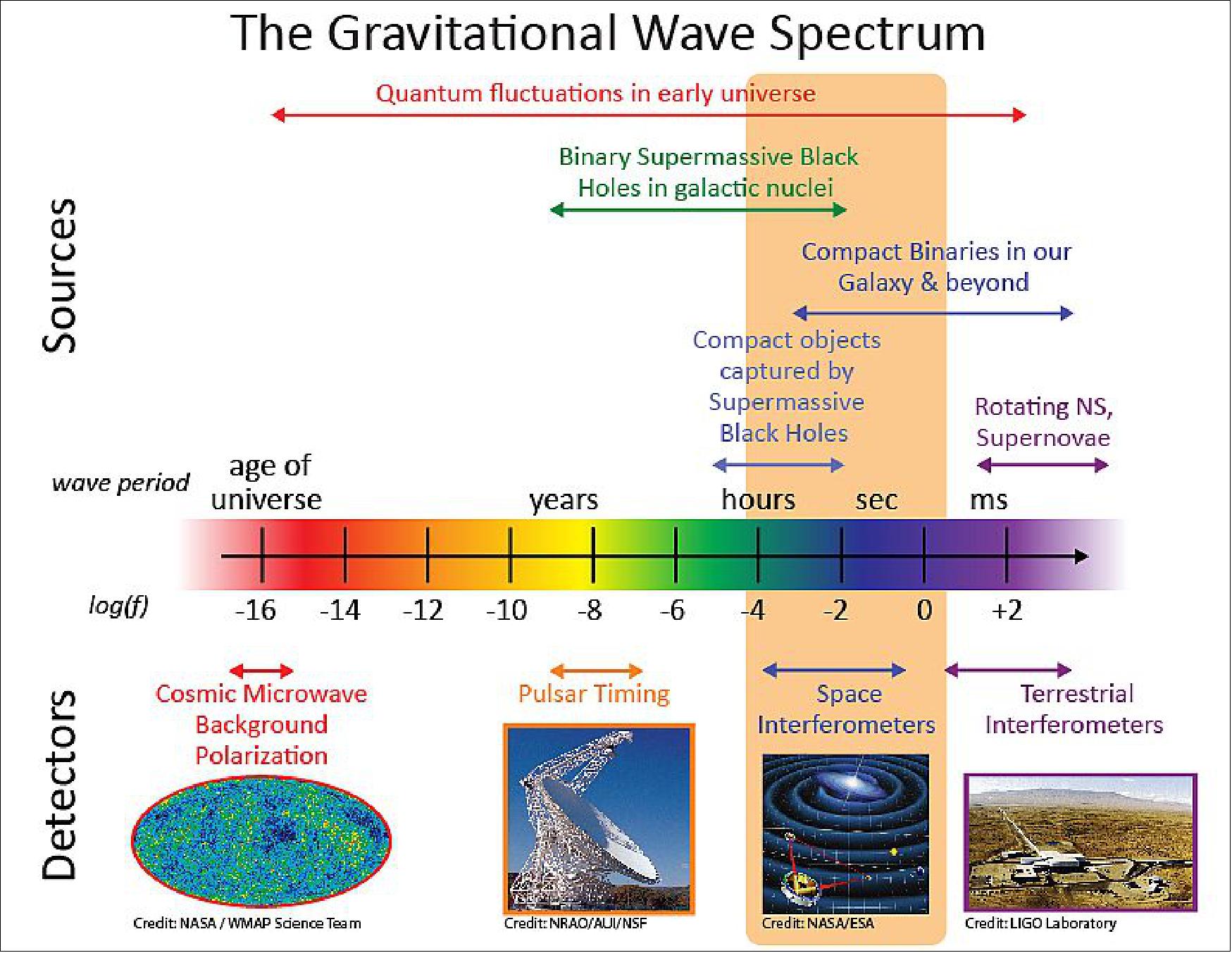
The European Space Agency (ESA) is leading the LISA mission. Together with NASA and an international consortium of scientists, the project brings together global expertise in gravitational wave detection.
What is NASA's Role? - NASA supports both ESA and the LISA Consortium as a collaborative partner providing science and engineering expertise, technology development, and interface with the U.S. research community. This includes development of enabling technologies, systems engineering support, prototyping of ground segment and data analysis infrastructure, and research in LISA-related astrophysics.
NASA is directly supporting the development of five key technologies for possible contribution to the ESA-led LISA mission. LISA Telescope and laser systems are being developed at the Goddard Space Flight Center; a phase measurement system and precision micropropulsion system are being developed at the Jet Propulsion Laboratory; and a Charge Management System is being developed by the University of Florida under an award from NASA. The NASA LISA Study Office is coordinating this suite of development activities and managing interfaces with European partners.
LISA Consortium
The consortium consists of a Consortium Lead supported by a Consortium Board, a Consortium Coordination Group, and working groups in instrument development, data analysis and science. 9)
It represents the European states involved in LISA: Germany, Italy, France, UK, Switzerland, Spain, Denmark, The Netherlands, Belgium, Portugal, Sweden, Hungary, Romania and the USA. The consortium is led by Prof. Dr. Karsten Danzmann, who chaired the former LISA International Science Team and is a director at the Max Planck Institute for Gravitational Physics (Albert Einstein Institute/AEI) and a professor at the Leibniz Universität in Hannover, Germany.
Besides preparing the science and the technology for the LISA mission, the consortium has strongly supported ESA's LISA Pathfinder mission (LPF). LPF has successfully demonstrated key technologies for measuring gravity in space for the first time, paving the way not only for gravitational wave detectors but also for next-generation Earth and planetary gravimetry.
Mission Status
• May 4, 2022: ESA’s Laser Interferometer Space Antenna (LISA) passed an important review that marks the mission as feasible for final technology development and design before adoption. 10)
- With LISA, ESA aims to fly the first space-based observatory dedicated to studying gravitational waves – ripples in the fabric of space-time emitted during the most powerful events in the Universe, such as pairs of supermassive black holes colliding and merging.
- Mergers of black holes that have millions of times the mass of the Sun, neutron stars falling into the black holes that sit at the center of many galaxies, and events that took place shortly after the Big Bang all produce very low frequency gravitational waves. These waves are so long that they can only be detected using a space observatory that spans millions of kilometres (see Figure 6).
- LISA will be able to do exactly this with its three spacecraft flying in a triangular formation with 2.5-million kilometre-long sides. Gravitational waves from sources throughout the Universe will produce very tiny oscillations in the arm lengths.
- In 2017, LISA was selected as one of ESA’s large class missions in the Cosmic Vision Programme. It has now passed through Phase A in the mission lifetime cycle, where the missions’ feasibility was assessed, as well as where the first designs and technologies were developed.
- Phase A ended with a comprehensive ‘Mission Formulation Review’. The review team, consisting of experts from ESA, NASA, the scientific community and industry, identified no showstoppers and confirmed that LISA has successfully reached a maturity sufficient to proceed to the next stage of development.
- After passing the review, LISA now enters Phase B1, which is where the mission will be refined, all necessary technology will be developed, final designs will be chosen, and international agreements will be set.

- “Transitioning into Phase B1 lifts the mission out of concept studies and marks a major milestone for the involved scientists and engineers,” said ESA’s LISA study manager Martin Gehler. “After a long journey, starting with the first sketches in the 1980s, we now know that we are on track, and that we have a feasible plan forward to adoption.”
- During the path towards adoption of the mission – after which the construction phase begins – all crucial components of LISA’s technology are pre-developed by ESA, NASA and the LISA consortium of ESA member states. Examples of these technologies are the laser systems, phasemeters, telescopes, and the gravitational reference sensor.
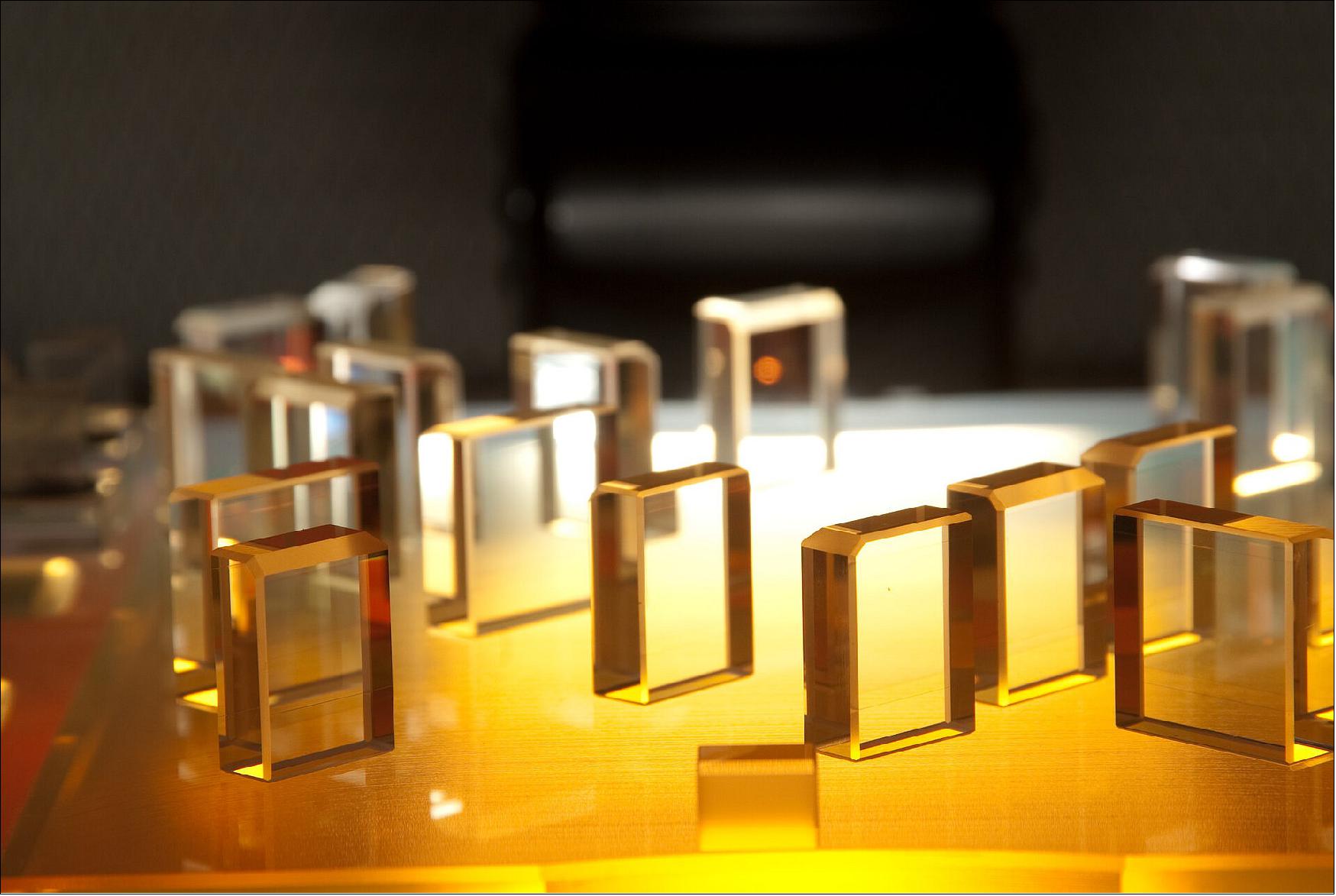
• September 30, 2021: Gravitational waves are ripples in spacetime produced by the acceleration of very massive objects, such as black holes coming together and merging. Different objects in space produce gravitational waves of different timescales, ranging from milliseconds to billions of years. Some of these waves can only be observed from space. 11)
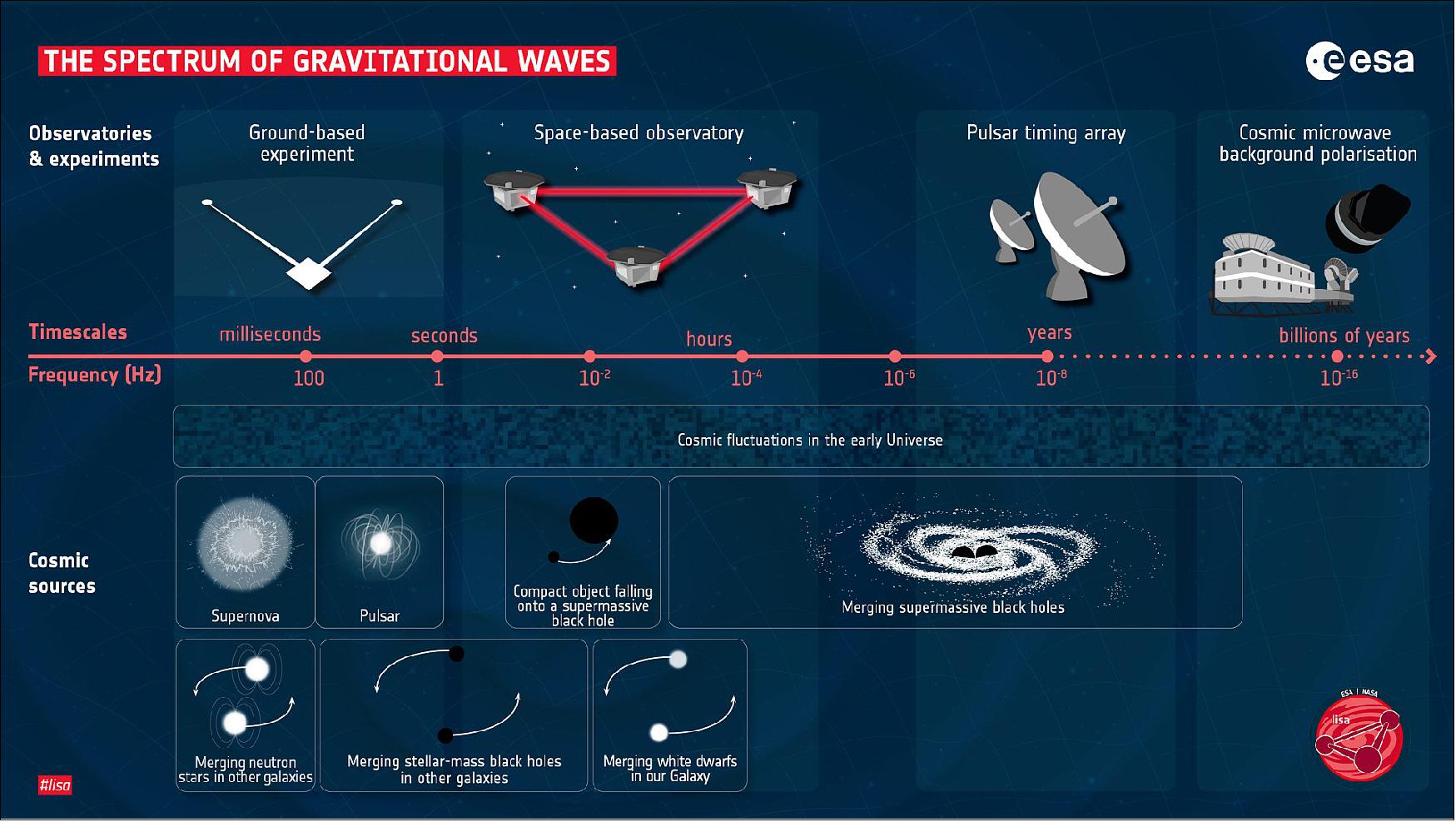
- This is the goal of ESA’s future mission LISA, which will be the first space-based gravitational wave observatory.
- LISA's hardware was first successfully tested in space with ESA’s LISA Pathfinder mission. The Pathfinder demonstrated that it’s possible to place and maintain test masses in free-fall to an astonishing level of precision, and that the exquisite measurement devices needed for LISA meets the requirements.
• September 14, 2021: Finding the biggest collisions in the universe takes time, patience, and super steady lasers. -In May, NASA specialists working with industry partners delivered the first prototype laser for the European Space Agency-led Laser Interferometer Space Antenna, or LISA, mission. This unique laser instrument is designed to detect the telltale ripples in gravitational fields caused by the mergers of neutron stars, black holes, and supermassive black holes in space. 12)
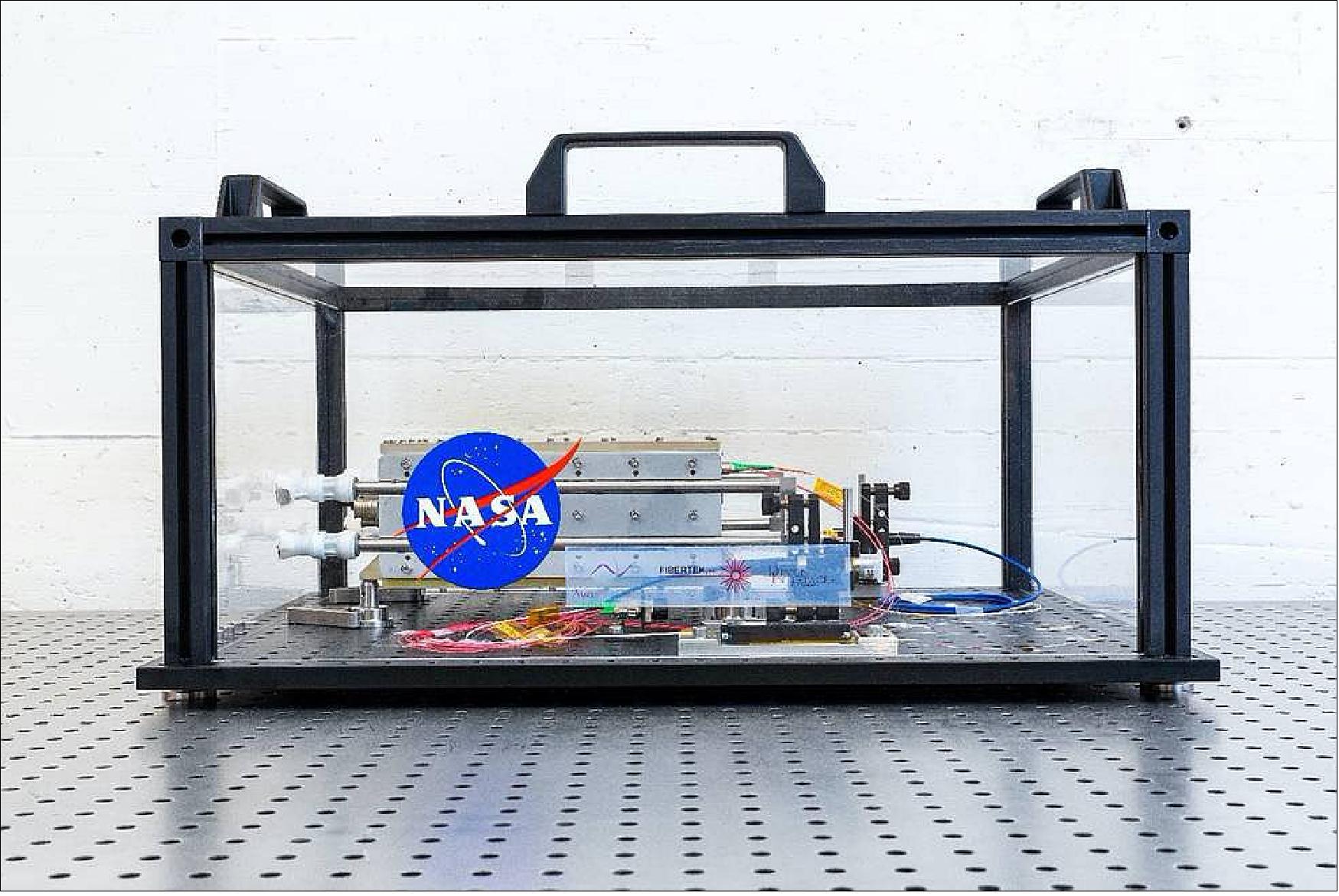
- Anthony Yu at NASA’s Goddard Space Flight Center in Greenbelt, Maryland, leads the laser transmitter development for LISA.
- “We’re developing a highly stable and robust laser for the LISA observatory,” Yu said. “We've leveraged lessons learned from previous missions and the latest technologies in photonics packaging and reliability engineering. Now, to meet the challenging LISA requirements, NASA has developed a system that produces a laser transmitter by using a low-power laser enhanced by a fiber-optic amplifier."
- The team is building upon the laser technology used in NASA’s GRACE(Gravity Recovery and Climate Experiment) mission. “We developed a more compact version as a master oscillator,” Yu said. “It has much smaller size, weight, and power consumption to allow for a fully redundant master oscillator for long-duration lifetime requirements.”
- The LISA laser prototype is a 2-watt laser operating in the near-infrared part of the spectrum. “Our laser is about 400 times more powerful than the typical laser pointer that puts out about 5 mW or less,” Yu said. “The laser module size, not including the electronics, is about half the volume of a typical shoe box.”
- The Swiss Center for Electronics and Microtechnology (CSEM), headquartered in Neuchâtel, Switzerland, confirmed receipt of the lasers and will begin testing them for stability.
- LISA will consist of three spacecraft following Earth in its orbit around the Sun and flying in a precision formation, with 1.5 million miles (2.5 million kilometers) separating each one. Each spacecraft will continuously point two lasers at its counterparts. The laser receiver must be sensitive to a few hundreds of picowatts of signal strength, as the laser beam will spread to about 20 km by the time it reaches its target spacecraft. A time-code signal embedded in the beams allows LISA to measure the slightest interference in these transmissions.
- Ripples in the fabric of space-time as small as a picometer – 50 times smaller than a hydrogen atom – will produce a detectable change in the distances between the spacecraft. Measuring these changes will give scientists the general scale of what collided to produce these ripples and an idea of where in the sky to aim other observatories looking for secondary effects.
- These gravitational wave fluctuations are so small they would be obscured by external forces such as dust impacts and the radiation pressure of sunlight on the spacecraft. To mitigate this, the drag-free control concept – demonstrated on the LISA Pathfinder mission in 2015 – uses free-floating test masses sheltered inside each spacecraft as reference points for the measurement.
- LISA expands on work by the National Science Foundation’s Laser Interferometer Gravitational-Wave Observatory (LIGO), which captured its first recording of gravitational waves in 2015. Since then, the pair of ground-based observatories in Hanford, Washington, and Livingston, Louisiana, have captured four dozen mergers.
- Thomas Hams, program scientist for LISA at NASA Headquarters in Washington, said the precision laser measurements will allow us to zoom in on the gravitational wave signatures of these mergers and enable other observatories to focus on the right part of the sky to capture these events in the electromagnetic spectrum.
- NASA’s Fermi Gamma-ray Space Telescope picked up the first such multimessenger observation just seconds after LIGO detected a merger of two neutron stars through gravitational waves.
- “With LISA, the hope is you will be able to see these things develop before the merger actually happens,” Hams said. “There will be an indicator that something is coming.”
Industry Partnership
- To achieve the required stability, the team brought Fibertek Inc. in Herndon, Virginia, and Avo Photonics Inc. in Horsham, Pennsylvania, to develop the laser, oscillator, and power amplifier, and an independent optical engineer in San Jose, California.
- Avo Photonics built the laser for the observatory.
- “Here you have the challenges of spaceborne ruggedness needs, on top of submicron-level optical alignment tolerance requirements. These really push your optical, thermal, and mechanical design chops,” Avo Photonics President Joseph L. Dallas said. “In addition, the narrow linewidth, low noise, and overall stability needed for this mission is unprecedented.”
- Photonics pioneer Tom Kane invented the monolithic laser oscillator technology that Goddard used to stabilize the frequency of the laser light. “Your average laser can be very messy,” Kane said. “They can wander all around their target frequency. You need a ‘quiet’ laser that’s exactly one wavelength and a perfect beam out to 15 decimal places of accuracy.”
- His oscillator technology uses feedback loops to keep the laser burning at such precision. “The wavelength ends up becoming the ruler for these incredible distances,” Kane said.
- The high-power, low-noise amplifier came from Fibertek.
- Fibertek also contributed to NASA’s Ice Cloud and Land Elevation Satellite (ICESat) 2 and the Cloud-Aerosol Lidar and Infrared Pathfinder Satellite Observation (CALIPSO), which has been operating a laser pointed at Earth for 15 years.
- Including time for testing on the ground and potential mission extensions, LISA’s lasers must operate without skipping a hertz for up to 16 years, Goddard’s Yu said.
- “Once launched, they will need to be in 24/7 operation for five years for the initial mission, with a possible six to seven years of extended mission after that,” Yu explained. “We need them to be stable and quiet.”
• March 16, 2020: NASA has awarded the Laser Interferometer Space Antenna (LISA) Engineering Development Unit Telescope (EDUT) contract to L3Harris Corporation of Rochester, New York. 13)
- This is a cost-plus, fixed-fee contract with a total value of $20,091,645. The period of performance is 36 months.
- LISA is an international project led by ESA (European Space Agency) as a spaceborne gravitational wave observatory. LISA is planned to consist of three spacecraft that are separated by 2.5 million km in an Earth-trailing orbit. These three spacecraft relay laser beams back and forth between different spacecraft and the signals are combined to search for gravitational wave signatures that come from distortions of spacetime. The study of the universe through gravitational waves will yield a revolutionary perspective on the universe, which has been intensely studied using electromagnetic waves in many wavelength bands.
- One of NASA's contributions to the LISA partnership with ESA is to develop the precision telescopes that transmit and receive the 1.06 µm coherent laser light. Under this contract award, L3Harris will design, fabricate, align, test, verify and deliver one Telescope Structural/Thermal Model and two Engineering Development Unit telescopes.
• July 26, 2019: A newly discovered pair of white dwarfs that orbit each other every seven minutes is an ideal target for a planned gravitational-wave observatory in space. 14)
- Since 2017 the Zwicky Transient Facility at Palomar Observatory in California has monitored more than 2 billion objects as part of its optical survey of the northern sky. One of them is a white-dwarf binary, dubbed ZTF J1539+5027, with a period of seven minutes. Helpfully, the white dwarfs eclipse each other as viewed from Earth and thus enable determination of the mass and radii of each and the orbital decay due to the emission of gravitational radiation. ZTF J1539 is the fastest eclipsing binary yet discovered.
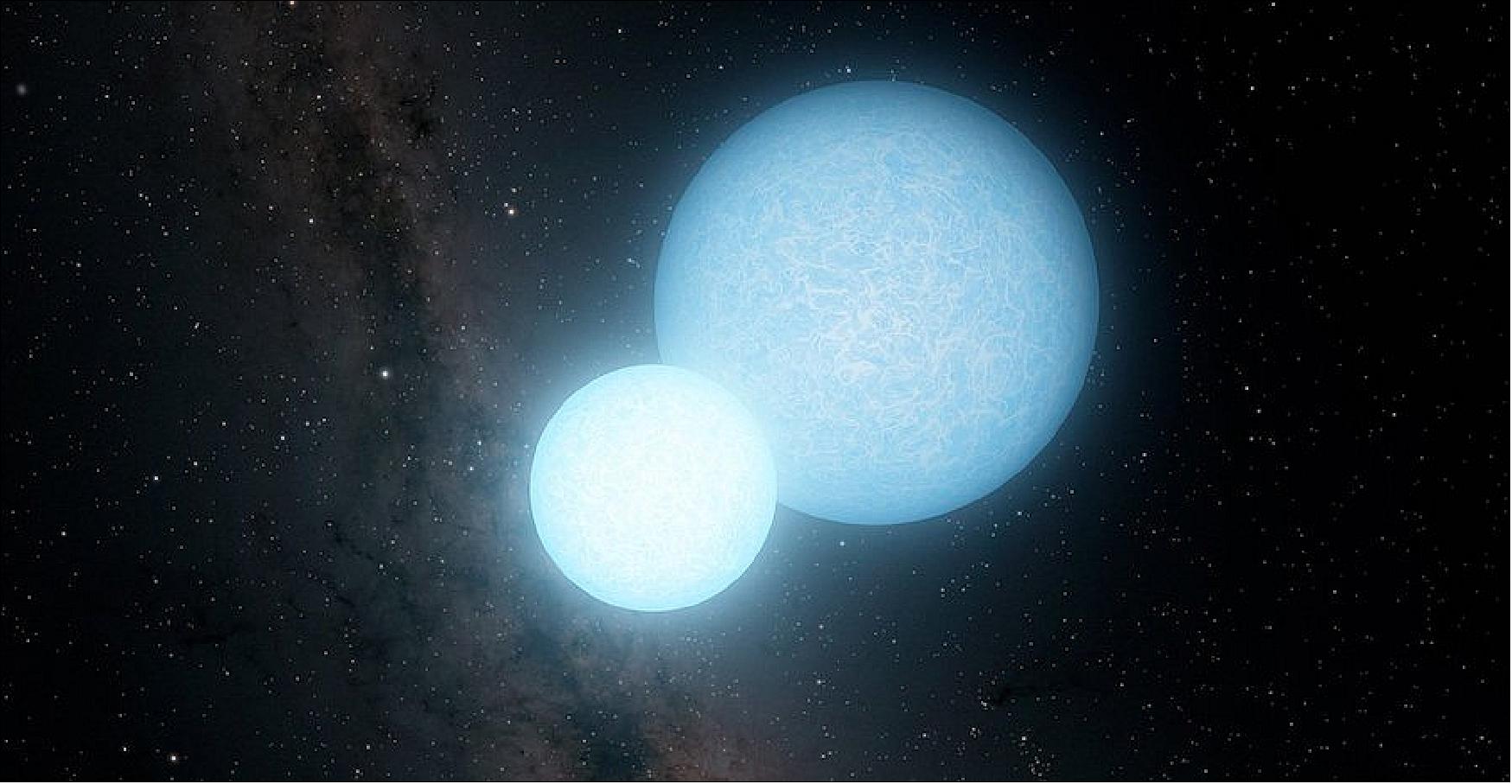
- Kevin Burdge of Caltech and his colleagues identified the pair through an algorithm that searched for periodicity in 20 million of the survey’s light curves. The team quickly followed up with observations by telescopes at Kitt Peak in Arizona and at Palomar that confirmed a binary with a 6.91-minute period. The only objects bright and compact enough to maintain such a close orbital tango are white dwarfs, the postfusion remnants of stars like the Sun (see the article by Hugh Van Horn, Physics Today, January 1979, page 23). The two white dwarfs are different—the primary is hotter and about three times as massive as the secondary.
- Burdge and colleagues say that the system would be an ideal early target for the Laser Interferometer Space Antenna (LISA), a space-based gravitational-wave observatory. By measuring a gradual shift in the time of the secondary body’s eclipse of the primary, the researchers confirmed the binary’s orbital decay and determined that it is emitting gravitational radiation at 4.8 mHz, which is right about at the peak of LISA’s designed sensitivity.
- The newly discovered pair comes with questions. Spectroscopic measurements obtained by the Keck I telescope in Hawaii indicate that the primary star has a temperature of nearly 50,000 K, far hotter than would be expected for a rapidly cooling white dwarf, even when the heat from tidal friction is considered. The most likely culprit is accretion of material pulled from the secondary. But the telltale sign of accretion is x rays, which are emitted when ultrahot material impacts an object’s surface, and the researchers didn’t see any in archival X-ray survey data.
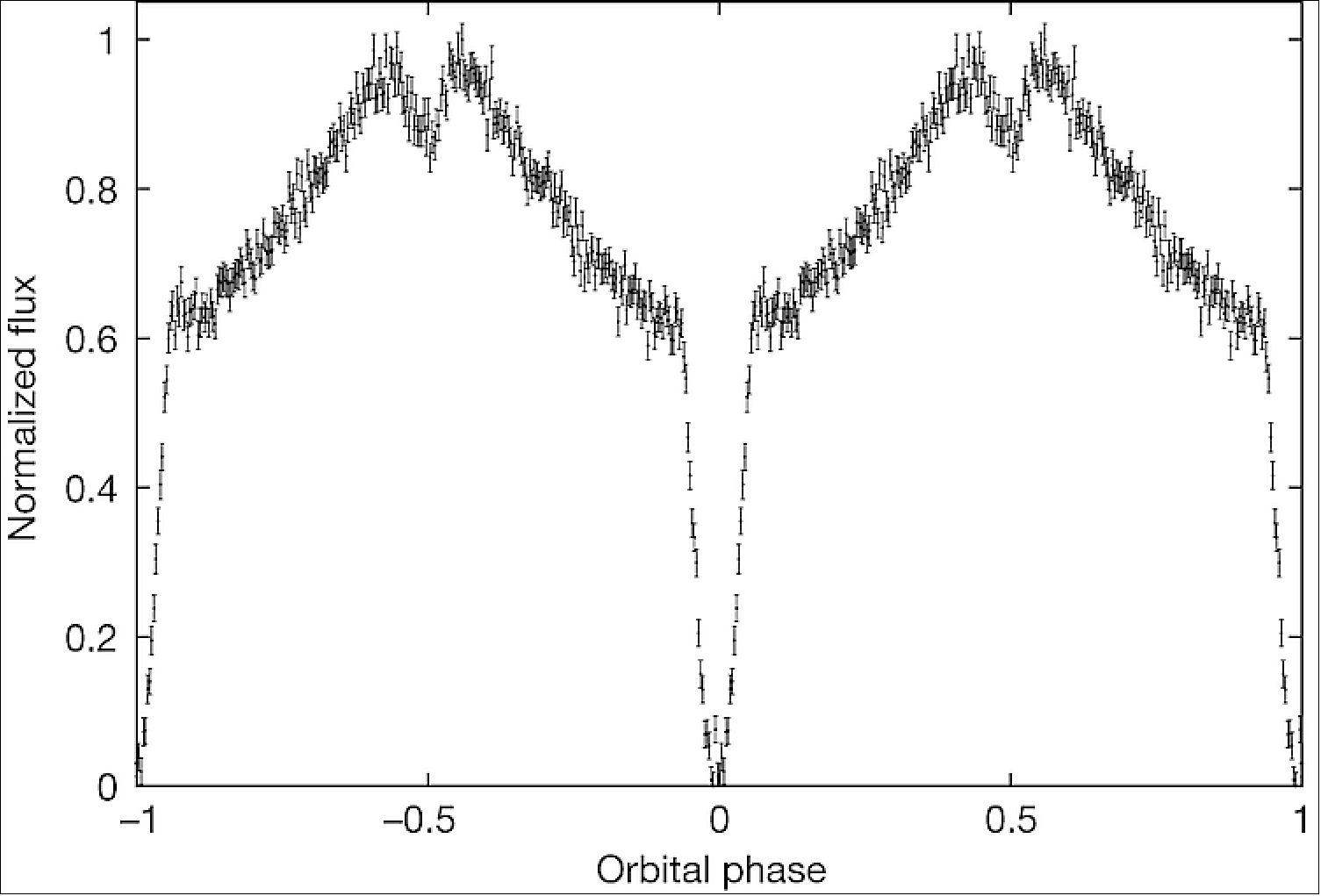
- Burdge and colleagues plan to use the Hubble Space Telescope and its UV detection capabilities to more carefully investigate the pair; the primary is so hot that it emits most of its light in the UV. Researchers have about 130,000 years to do so, at which point either the secondary will shed much of its mass to the primary or the white dwarfs will merge completely. 15)
• July 12, 2019: NASA Goddard Space Flight Center is developing a master oscillator power amplifier (MOPA) laser transmitter for the ESA-led Laser Interferometer Space Antenna (LISA) mission. Taking advantage of our space laser experience and the emerging telecom laser technology, we are developing a full laser system for the LISA mission. Our research effort has included both master oscillator (MO) and power amplifier (PA) developments, and their environmental testing and reliability for space flight. Our current baseline for the MO is a low-mass, compact micro non-planar ring oscillator (m- NPRO) laser. The amplifier uses a robust mechanical design based on fiber components. We have performed laser system noise tests by amplitude- and frequency-stabilizing the PA output. We will describe our progress and plans to demonstrate a TRL 6 laser system, which is an essential step toward qualifying lasers for space applications, by 2021. 16)
• June 8, 2018: The UK, through the work of the University of Glasgow’s Institute for Gravitational Research and the Science and Technology Facilities Council’s UK Astronomy Technology Centre (UK ATC) in Edinburgh, will develop the optical benches for the European Space Agency’s LISA (Laser Interferometer Space Antenna) mission. These optical benches are at the core of the laser interferometry measurement system, the key technology needed to detect gravitational waves. 17)
- The space observatory will allow scientists to study these mysterious waves, improving our knowledge of the beginning, evolution and structure of the universe. It will build on the success the LISA Pathfinder mission, which in 2016 successfully demonstrated the technology needed for LISA. It will also build on work already taking place here on Earth where UK researchers, including from STFC and the University of Glasgow, are contributing to the ongoing LIGO project that made the first detection of gravitational waves in 2015.
- Chris Lee, Head of Space Science at the UK Space Agency, said: “The University of Glasgow has a worldwide reputation for gravitational waves research, with the pioneering work of Professor Ron Drever in the 1960s leading to the Nobel Prize-winning detection of the waves in 2015. This new funding ensures this legacy continues with the LISA mission, alongside crucial technology innovation from the UK ATC in Edinburgh. Scotland is yet again at the heart of UK space activity.”
• June 4, 2018: Thales Alenia Space, the joint venture between Thales (67%) and Leonardo (33%), announced today that it has won a contract from ESA (European Space Agency) for the Phase A study of LISA (Laser Interferometer Space Antenna), the third “large-class” mission in ESA's Cosmic Vision 2015-25 Program. 18)
- LISA will be the first spaceborne gravitational wave observatory. Its major aim is the detection of gravitational waves, ripples in the fabric of space-time created by large and dense celestial bodies with very strong gravity – such as black holes – that move with accelerated motion, as predicted by Albert Einstein's theory of general relativity. The mission will give scientists a completely new view of the cosmos compared with traditional observation techniques, and will hopefully help unveil some of its many mysteries.
- LISA will consist of three spacecraft in a triangular formation, separated by 2.5 million kilometers, following the Earth in its orbit around the Sun. Each satellite will carry two reference masses. Laser beams will be transmitted between satellites to measure the displacement of these masses with a resolution ten times smaller than an atom. Thales Alenia Space will lead the feasibility study phase ending in January 2020. This contract marks a major step forward for the LISA mission and also confirms Thales Alenia Space’s traditional key role in many of Europe’s leading scientific missions.
- Phase A includes the identification of a feasible mission design, the definition of a baseline for the spacecraft and its subsystems, including payload interfaces, the evaluation of achievable science based on extensive analyses, and the definition of a development road map.
- LISA will use the same technique as two other programs, LIGO (Laser Interferometer Gravitational-Wave Observatory) and Virgo (European Gravitational Observatory), to detect gravitational waves, namely measuring the displacement of reference masses using laser interferometry. But it will extend the observation envelope in the lower frequency spectrum, inaccessible from the ground, and considerably enhance capabilities and verification.
• January 22, 2018: Before an ESA mission reaches the launch pad, it has to go through a number of approval procedures that ensure the mission's readiness. The future space-based gravitational wave observatory, the Laser Interferometer Space Antenna (LISA), has recently passed its Mission Definition Review (MDR) with flying colors. 19)
- The MDR's goal is to review and confirm that:
a) LISA's present mission design is feasible and suitable,
b) the mission requirements meet LISA's science requirements,
c) the requirements are mature and adequate to the current phase,
d) the technology developments are adequate to the current phase, and
e) the interfaces between spacecraft, payload ground segment and launcher are well defined.
- “I am very satisfied that LISA passed the assessment so well. Now we are heading to the next phase. 2018 will be filled with further examinations, investigations and technology development. It’s great to see LISA making so much progress,” says Prof. Dr. Karsten Danzmann, director at the Max Planck Institute for Gravitational Physics (Albert Einstein Institute), director of the Institute for Gravitational Physics at Leibniz Universität Hannover, and LISA Consortium Lead.
- LISA is a mission of the European Space Agency (ESA). It is supported by many ESA member states as well as NASA and many scientists working together across the Atlantic. LISA will consist of three satellites spanning an equilateral triangle with each side approx. 2.5 million kilometers long. Gravitational waves passing through the constellation change these distances by a fraction of the diameter of an atom. LISA's key technologies were successfully demonstrated with ESA's LISA Pathfinder mission, which operated from late 2015 until mid 2017.
- LISA will measure low-frequency gravitational waves with oscillation periods ranging from 10 seconds to more than half a day, which cannot be detected with detectors on the earth. These are emitted by events such as supermassive black holes with millions of times the mass of our Sun merging at the centers of galaxies, the orbital motions of tens of thousands of binary stars in our Galaxy, and possibly exotic sources such as cosmic strings.
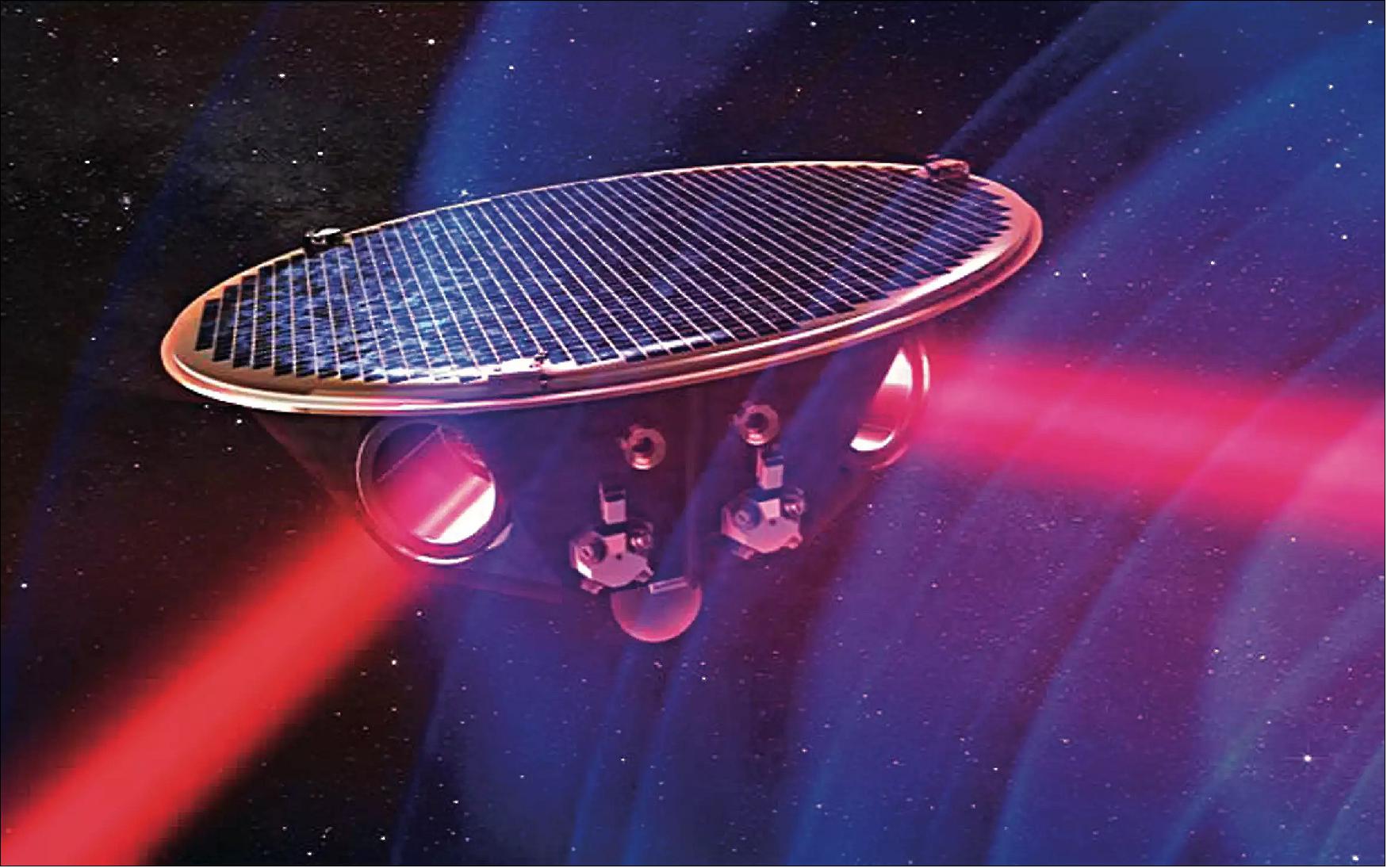
References
1) ”Gravitational wave mission selected, planet-hunting mission moves forward,” ESA June 20, 2017, URL: http://sci.esa.int/cosmic-vision/59243-gravitational-wave-mission-selected-planet-hunting-mission-moves-forward/
2) ”Merging black holes,” ESA satellite Integral, 30 March 2016, URL: http://sci.esa.int/integral/57656-merging-black-holes/
3) ”LISA Phase 0 CDF study - internal final presentation,” ESA, 06 May 2017, URL: https://sci.esa.int/web/lisa/-/59336-lisa-internal-phase-0-cdf-study-final-presentation
4) ”LISA - Internal Final Presentation ESTEC, 05-05-2017,” Prepared by the CDF Team, URL: https://sci.esa.int/documents/35005/36499/1567260318050-LISA_CDF_IFP_2017.pdf
5) ”Milky Way's globular cluster binaries detectable by LISA,” Space Daily, 15 May, 2018, URL: http://www.spacedaily.com/reports/Dozens_of_binaries_from_Milky_Ways_globular_clusters_could_be_detectable_by_LISA_999.html
6) Kyle Kremer, Sourav Chatterjee, Katelyn Breivik, Carl L. Rodriguez, Shane L. Larson, Frederic A. Rasio, ”LISA Sources in Milky Way Globular Clusters,” Physical Review Letters, Vol. 120, Issue 19, 191103, Published 11 May 2018, doi: 10.1103/PhysRevLett.120.191103, URL of abstract: https://journals.aps.org/prl/abstract/10.1103/PhysRevLett.120.191103
7) ”LISA (Laser Interferometer Space Antenna)”, NASA, URL: https://lisa.nasa.gov/
8) ”LISA Mission Summary,” ESA, 13 May 2020, URL: https://sci.esa.int/web/lisa/-/61367-mission-summary
9) ”LISA Consortium,” URL: https://www.elisascience.org/articles/lisa-consortium
10) ”LISA mission moves to final design phase,” ESA Science & Exploration, 04 May 2022, URL: https://www.esa.int/Science_Exploration/Space_Science/LISA_mission_moves_to_final_design_phase
11) The spectrum of gravitational waves,” ESA science & Exploration, 30 September 2021, URL: https://www.esa.int/ESA_Multimedia/Images/2021/09/The_spectrum_of_gravitational_waves
12) Karl B. Hille, ”NASA Provides Laser for LISA Mission,” NASA Feature, 14 September 2021, URL: https://www.nasa.gov/feature/goddard/2021/nasa-provides-laser-for-lisa-mission
13) ”NASA Awards Laser Interferometer Space Antenna Telescopes,” NASA Contract Release C20-007, 16 March 2020, URL: https://www.nasa.gov/press-release/goddard/2020/nasa-awards-laser-interferometer-space-antenna-telescopes
14) ”An ultrafast eclipsing binary,” Physics Today, 26 July 2019, URL: https://physicstoday.scitation.org/do/10.1063/PT.6.1.20190726a/full/
15) Kevin B. Burdge, Michael W. Coughlin, [....] Thomas A. Prince, ”General relativistic orbital decay in a seven-minute-orbital-period eclipsing binary system,” Nature, Volume 571, pages528–531, Published 24 2019, https://doi.org/10.1038/s41586-019-1403-0
16) Kenji Numata, Anthony Yu, Hua Jiao, Scott Merritt, Frankie Micalizzi, Molly Fahey, Jordan Camp, Michael Krainak, ”Progress and plans for a U.S. laser system for the LISA mission,” Proceedings of SPIE, 12 July 2019, Volume 11180, International Conference on Space Optics — ICSO 2018; 111800E (2019), https://doi.org/10.1117/12.2535933, Event: International Conference on Space Optics - ICSO 2018, 9-12 October 2018, Chania, Greece
17) ”Scotland's Space Expertise Key to Gravitational Waves Study,” UKSA, Press Release, 8 June 2018, URL: http://www.spaceref.com/news/viewpr.html?pid=52699
18) ”Discovering the mysteries of gravitational waves and black holes,” TAS (Thales Alenia Space) , 4 June 2018, URL: https://www.thalesgroup.com/en/worldwide/space/press-release/discovering-mysteries-gravitational-waves-and-black-holes
19) ”LISA mission passes review successfully and begins next stage of development,” Max Planck Institute for Gravitational Physics (Albert Einstein Institute), 22 January 2018, URL: https://www.aei.mpg.de/177750/lisa-mission-passes-review-successfully-and-begins-next-stage-of-development
The information compiled and edited in this article was provided by Herbert J. Kramer from his documentation of: ”Observation of the Earth and Its Environment: Survey of Missions and Sensors” (Springer Verlag) as well as many other sources after the publication of the 4th edition in 2002.
Project Status References Back to top